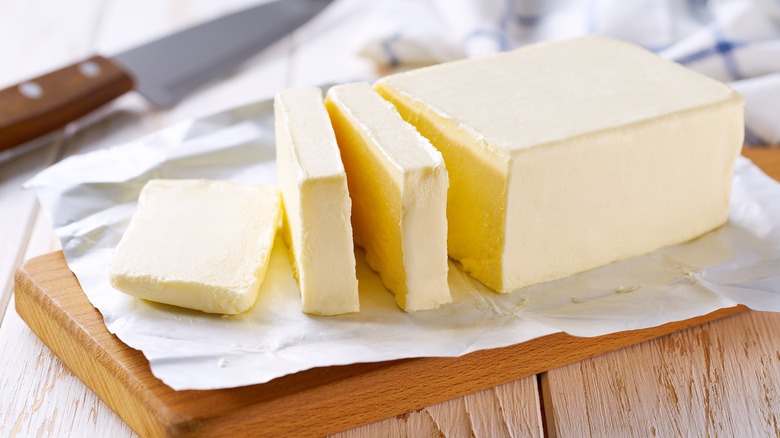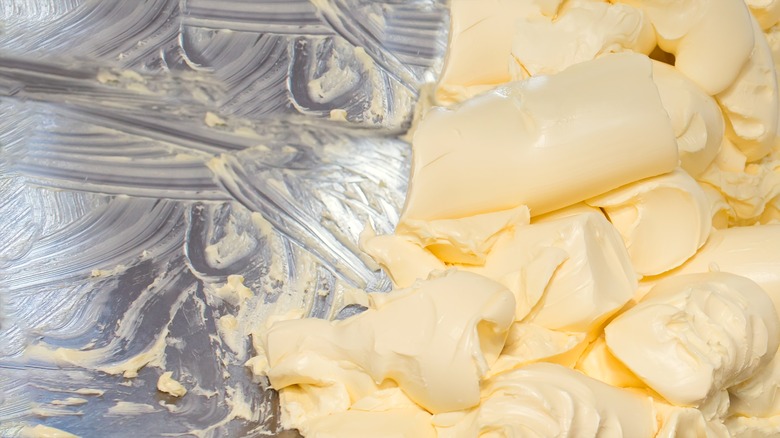What Makes Butter And Margarine Different?
If you've spent some time trying to pick the best butter at your grocery store, you've probably noticed margarine sitting nearby. Although it might seem like a cheap butter knock-off, there's a lot more to this golden spread than meets the eye. For one, unlike butter, which is made from pasteurized cream, margarine is typically non-dairy and made from a blend of oils, usually vegetable oils. Additionally, according to the FDA, all margarine sold in the U.S. must have at least 80% fat or it is classified as a spread. Likewise, it cannot have any added trans fat, as the FDA banned partially hydrogenated oils as food additives in 2015 due to health concerns. Unfortunately, because margarine used to have a lot of trans fat, it still has a bit of a bad rap today.
Another way margarine differs from butter is that it is made from primarily unsaturated fats. Some studies have shown that reducing your intake of saturated fats, like butter, can reduce the risk of cardiovascular disease (via Cochrane Library). That said, margarine still is rich in calories, so using it in moderation is key. Of course, some products will have more saturated fat than others, particularly those sold as sticks. Margarine that comes in tubs usually has far less and is softer and more spreadable because of it.
In terms of flavor, butter has a richer taste, while margarine can be greasier due to its blend of oils. Moreover, margarine can have flavoring, preservatives, emulsifiers, and colors added to enhance it. However, margarine is still a great butter substitute, specifically for soft baked goods.
How butter and margarine differ in cooking
Despite their differences, butter and margarine can be used similarly for cooking and baking, though butter is typically more popular due to its flavor. However, margarine is an affordable alternative with a higher smoke point. That said, it's crucial to pay attention to consistency and fat content if you substitute margarine for butter.
For example, margarine sold in tubs is typically too soft for pie crusts, scones, and other recipes that call for cold butter. Since light and spreadable margarine has a higher water content, it can soften baked goods. If you're substituting it for butter in a recipe, it's best to use a stick, which tends to have less water and be more firm. Furthermore, things baked with margarine won't brown or crisp up as well as those made with butter.
Of course, margarine is also an excellent swap for butter for simply spreading on bread — and it's actually a key ingredient in restaurant chain Olive Garden's free breadsticks! Margarine tends to be easier to spread, especially if you don't keep soft butter in a dish on your counter. Accordingly, tubbed margarine is always ready to be smeared on a muffin or bagel, which can make grabbing breakfast in the morning a little bit easier.

